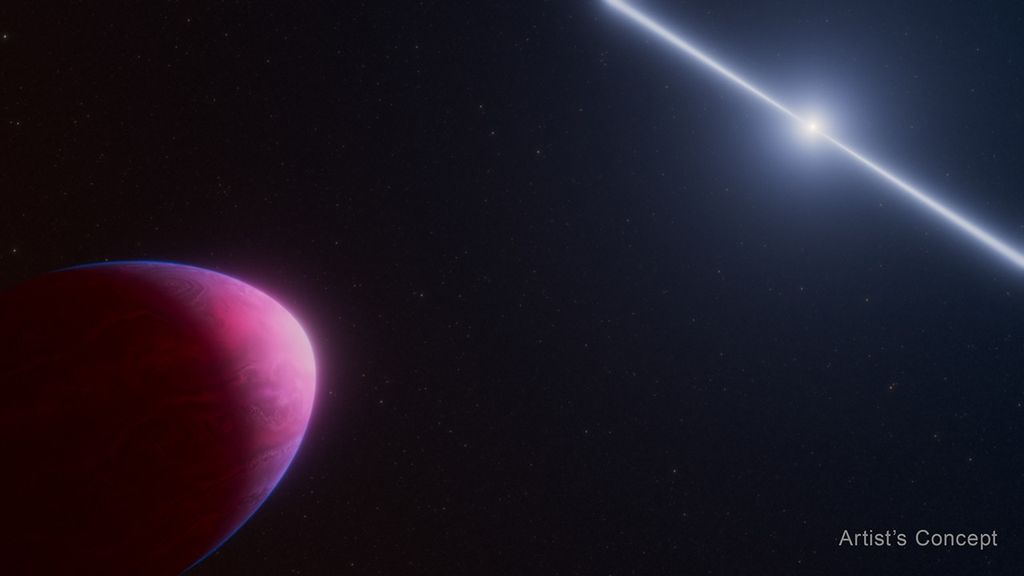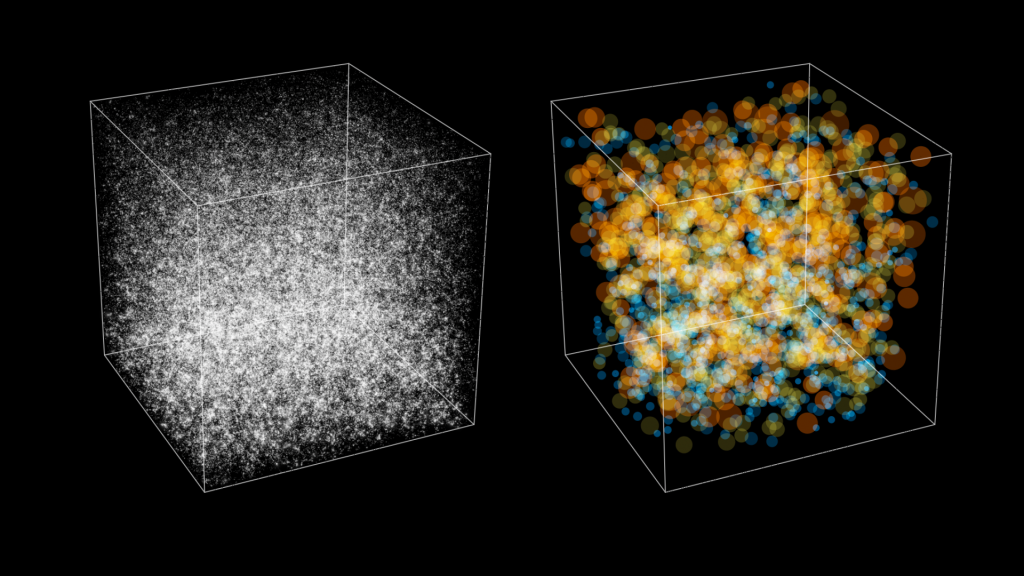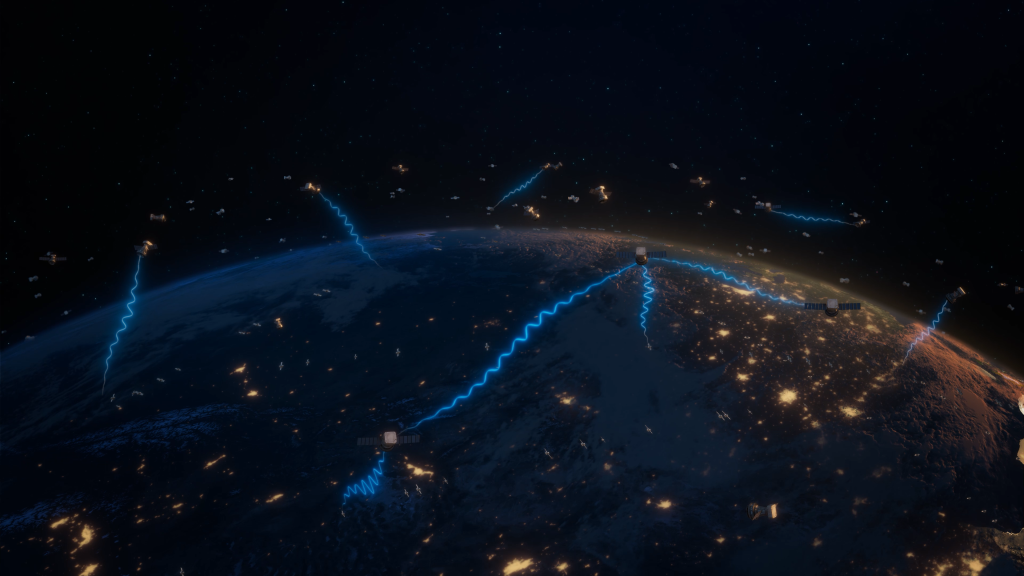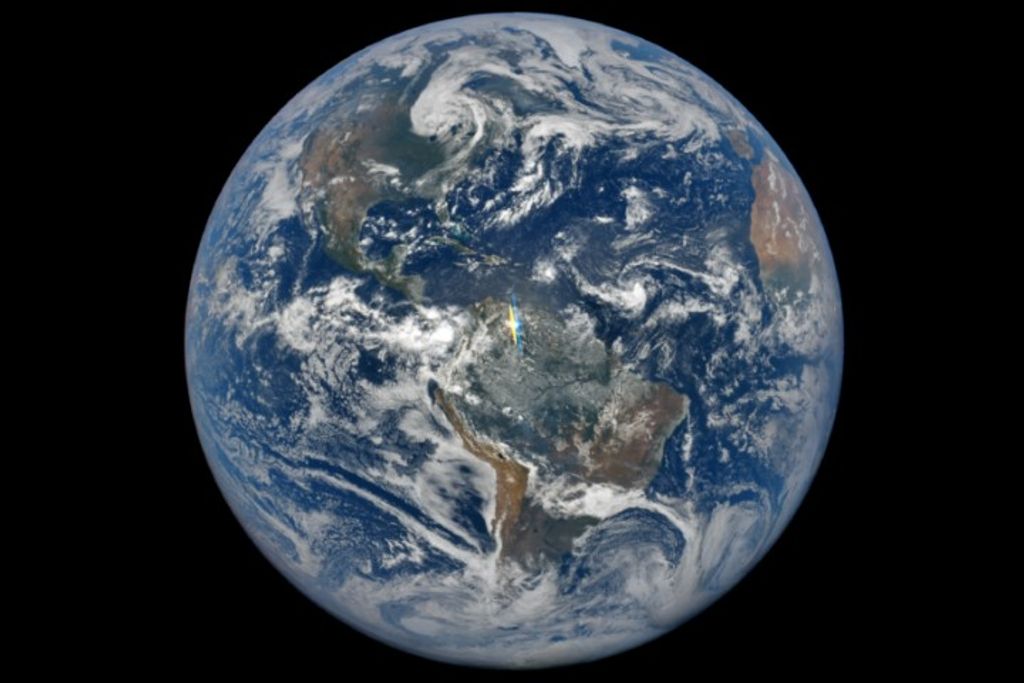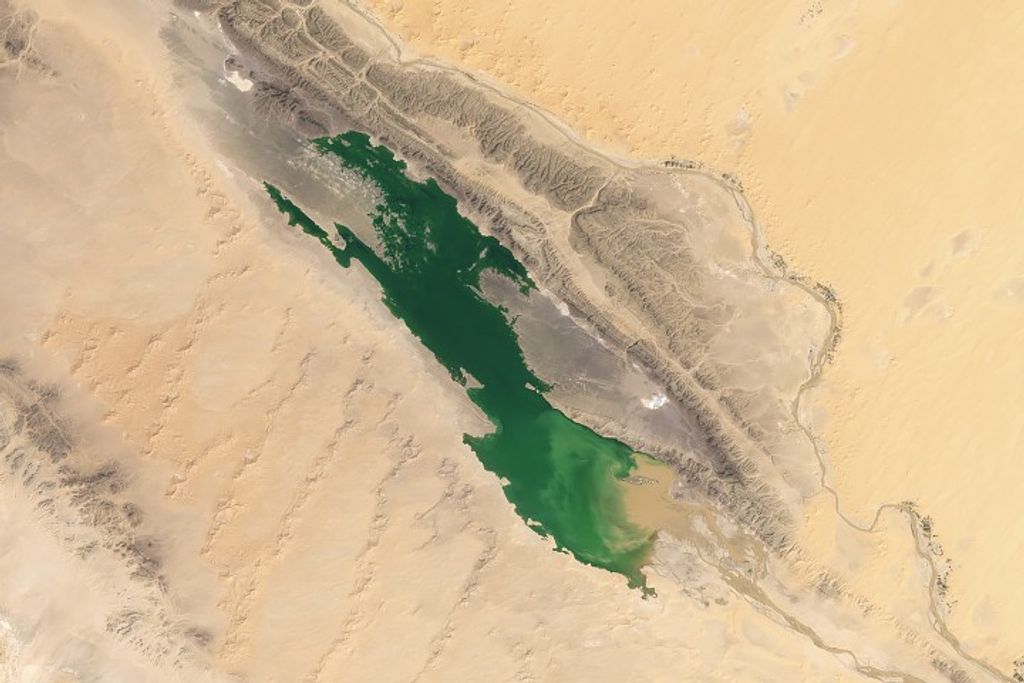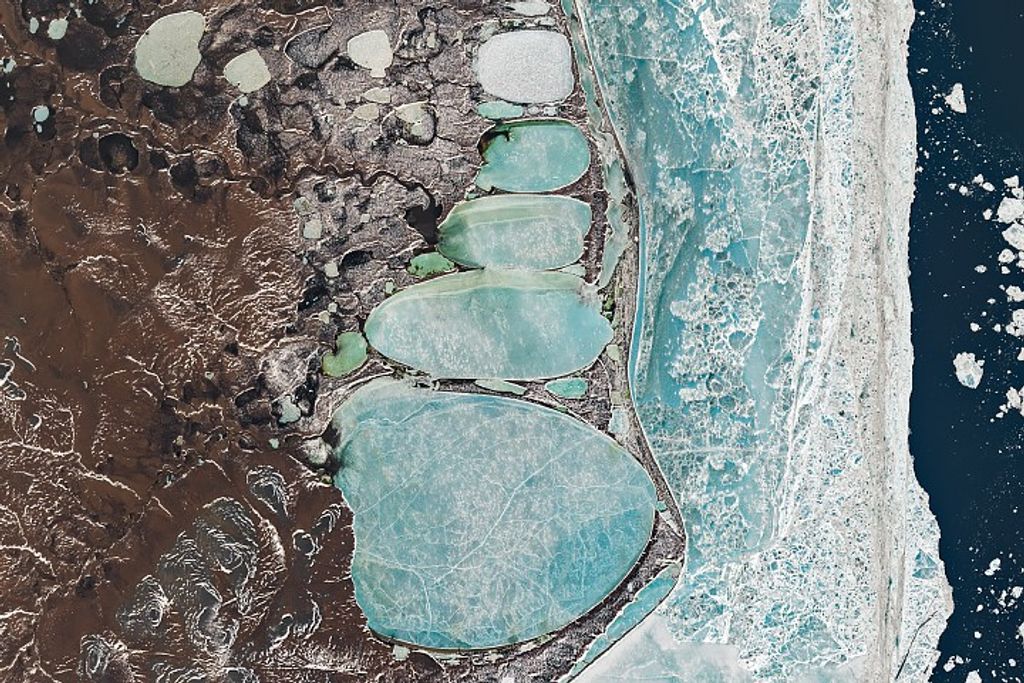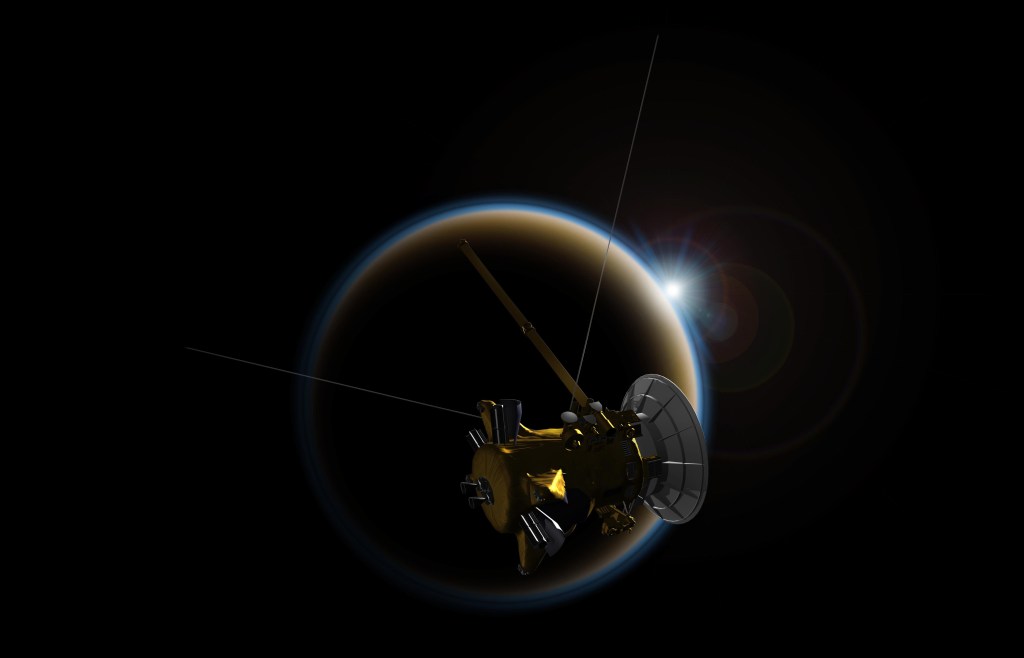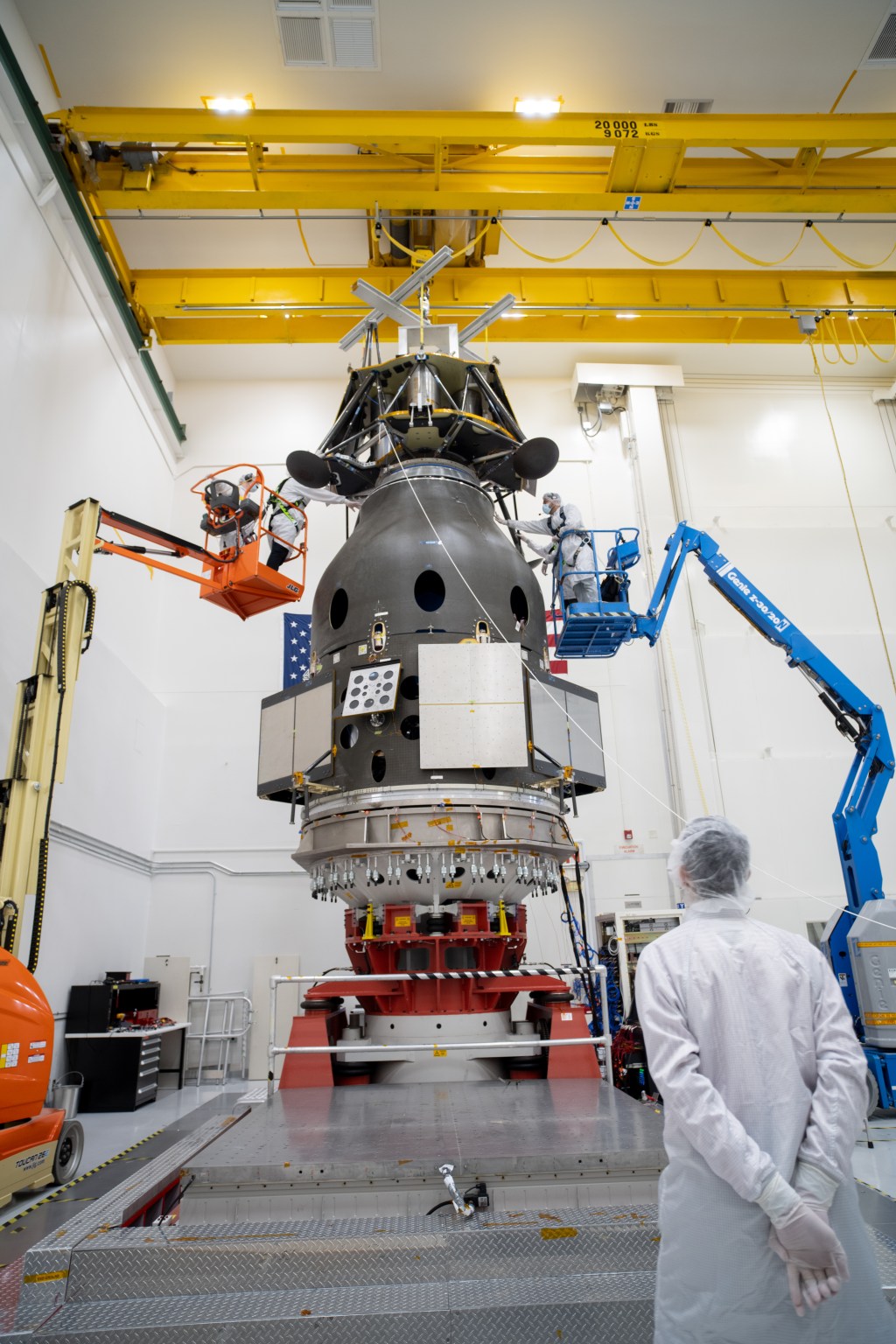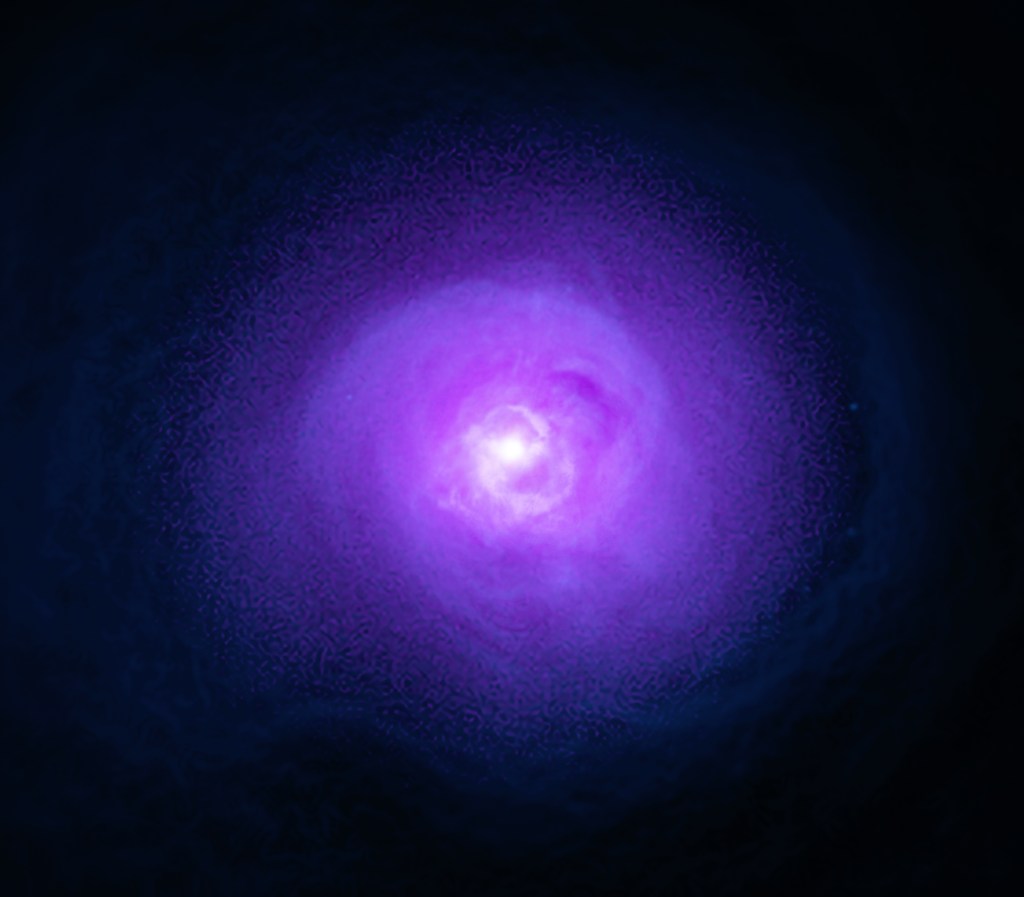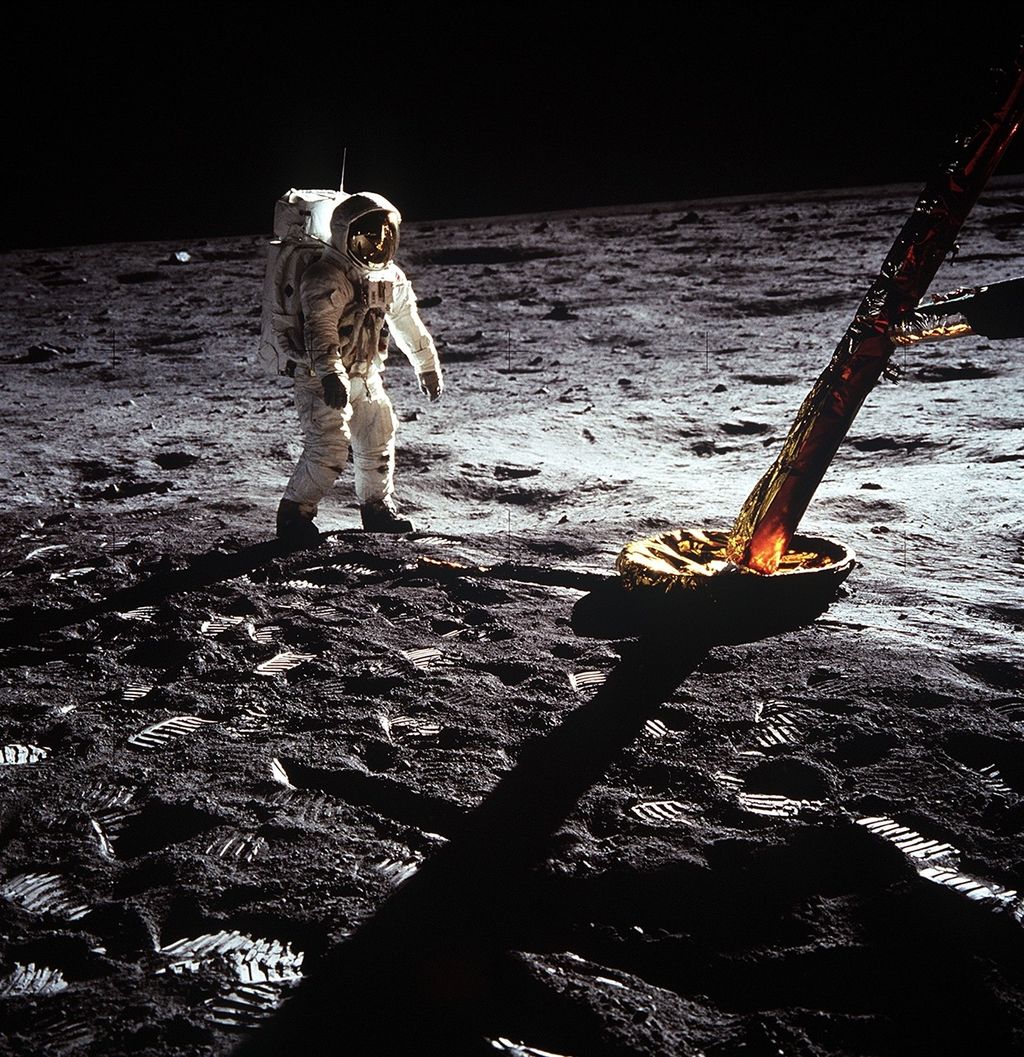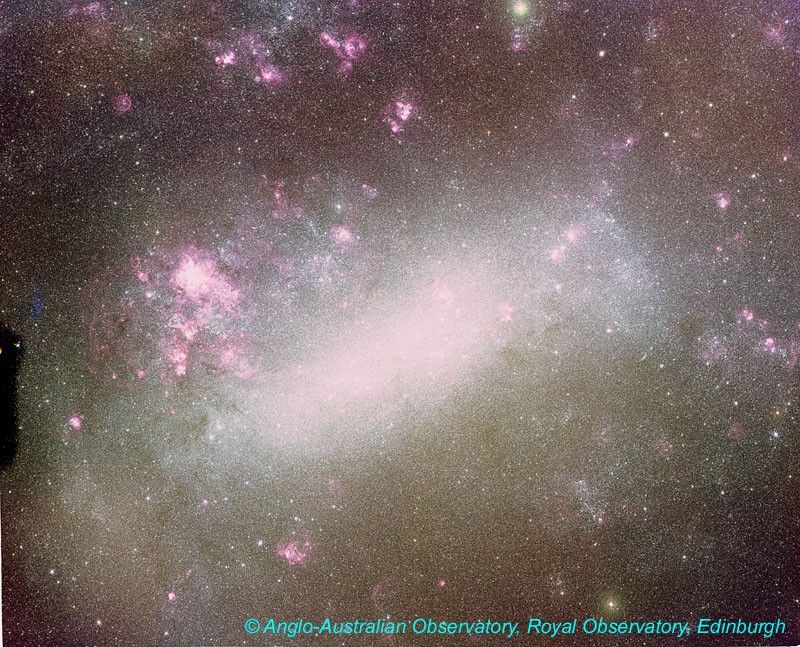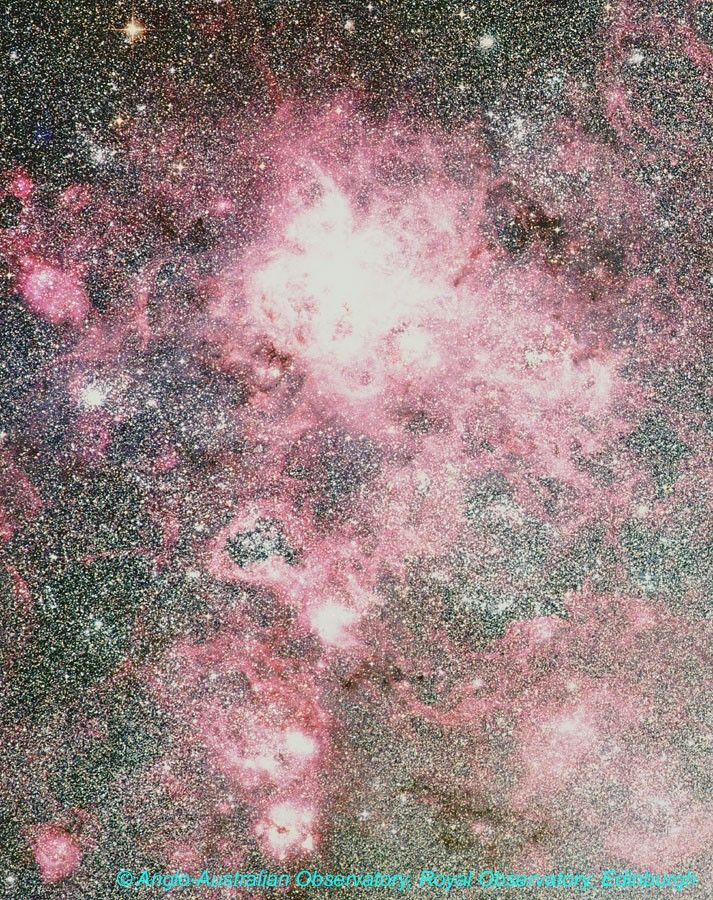1 min read
Visible and Infrared Views of Starbirth Region Near Star Cluster R136
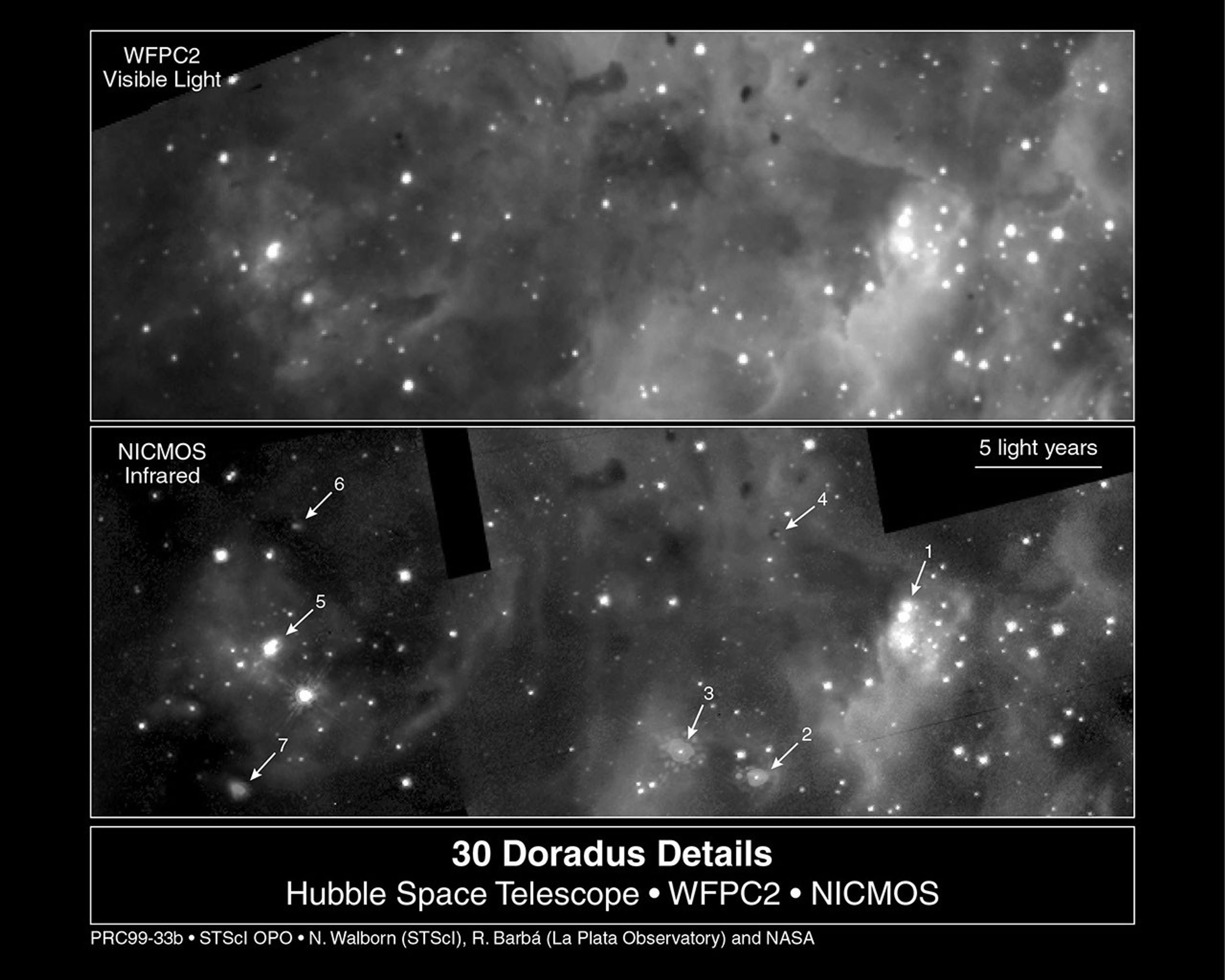
These are two views of a highly active region of star birth located northeast of the central cluster, R136, in 30 Doradus. The orientation and scale are identical for both views. The top panel is a composite of images in two colors taken with the Hubble Space Telescope's visible-light camera, the Wide Field and Planetary Camera 2 (WFPC2). The bottom panel is a composite of pictures taken through three infrared filters with Hubble's Near Infrared Camera and Multi-Object Spectrometer (NICMOS). In both cases the colors of the displays were chosen to correlate with the nebula's and stars' true colors.
Seven very young objects are identified with numbered arrows in the infrared image. Number 1 is a newborn, compact cluster dominated by a triple system of "hefty" stars. It has formed within the head of a massive dust pillar pointing toward R136. The energetic outflows from R136 have shaped the pillar and triggered the collapse of clouds within its summit to form the new stars. The radiation and outflows from these new stars have in turn blown off the top of the pillar, so they can be seen in the visible-light as well as the infrared image.
Numbers 2 and 3 also pinpoint newborn stars or stellar systems inside an adjacent, bright-rimmed pillar, likewise oriented toward R136. These objects are still immersed within their natal dust and can be seen only as very faint, red points in the visible-light image. They are, however, among the brightest objects in the infrared image, since dust does not block infrared light as much as visible light. Thus, numbers 2 and 3 and number 1 correspond respectively to two successive stages in the birth of massive stars. Number 4 is a very red star that has just formed within one of several very compact dust clouds nearby.
Number 5 is another very young triple-star system with a surrounding cluster of fainter stars. They also can be seen in the visible-light picture. Most remarkable are the glowing patches numbered 6 and 7, which astronomers have interpreted as "impact points" produced by twin jets of material slamming into surrounding dust clouds. These "impact points" are perfectly aligned on opposite sides of number 5 (the triple-star system), and each is separated from the star system by about 5 light-years. The jets probably originate from a circumstellar disk around one of the young stars in number 5. They may be rotating counterclockwise, thus producing moving, luminous patches on the surrounding dust, like a searchlight creating spots on clouds. These infrared patches produced by jets from a massive, young star are a new astronomical phenomenon.
About the Object
- R.A. PositionR.A. PositionRight ascension – analogous to longitude – is one component of an object's position.05h 38m 42.39s
- Dec. PositionDec. PositionDeclination – analogous to latitude – is one component of an object's position.-69° 6' 2.81"
- Object NameObject NameA name or catalog number that astronomers use to identify an astronomical object.30 Doradus, R136
- Release DateSeptember 29, 1999
- Science ReleaseHubble Captures a Grand View of the Birth of “Hefty” Stars
- Credit
Related Images & Videos
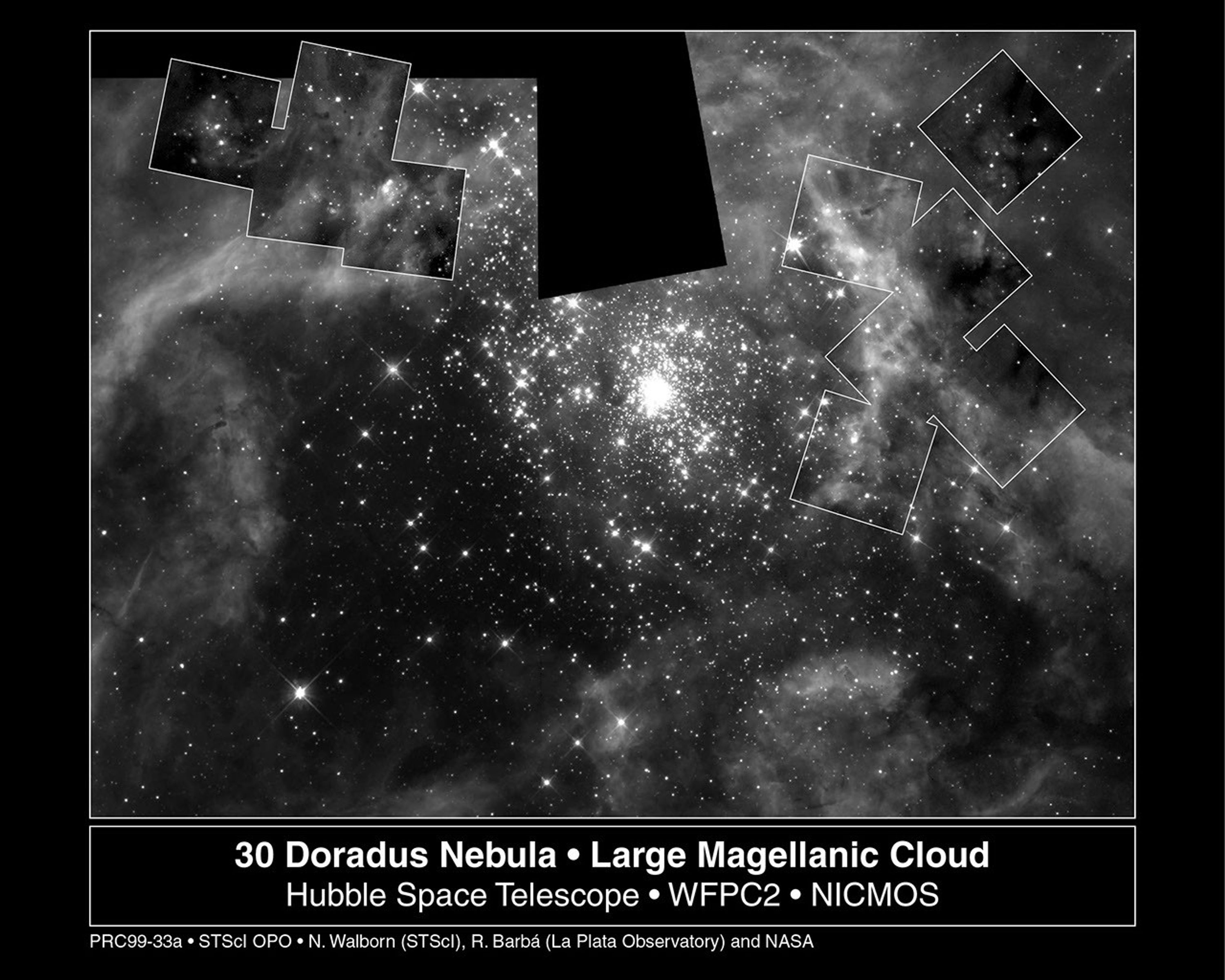
A Grand View of the Birth of "Hefty" Stars – 30 Doradus Nebula Montage
This picture, taken in visible light with the Hubble Space Telescope's Wide Field and Planetary Camera 2 (WFPC2), represents a sweeping view of the 30 Doradus Nebula. But Hubble's infrared camera - the Near Infrared Camera and Multi-Object Spectrometer (NICMOS) - has probed...
Share
Details
Claire Andreoli
NASA’s Goddard Space Flight Center
Greenbelt, Maryland
claire.andreoli@nasa.gov


